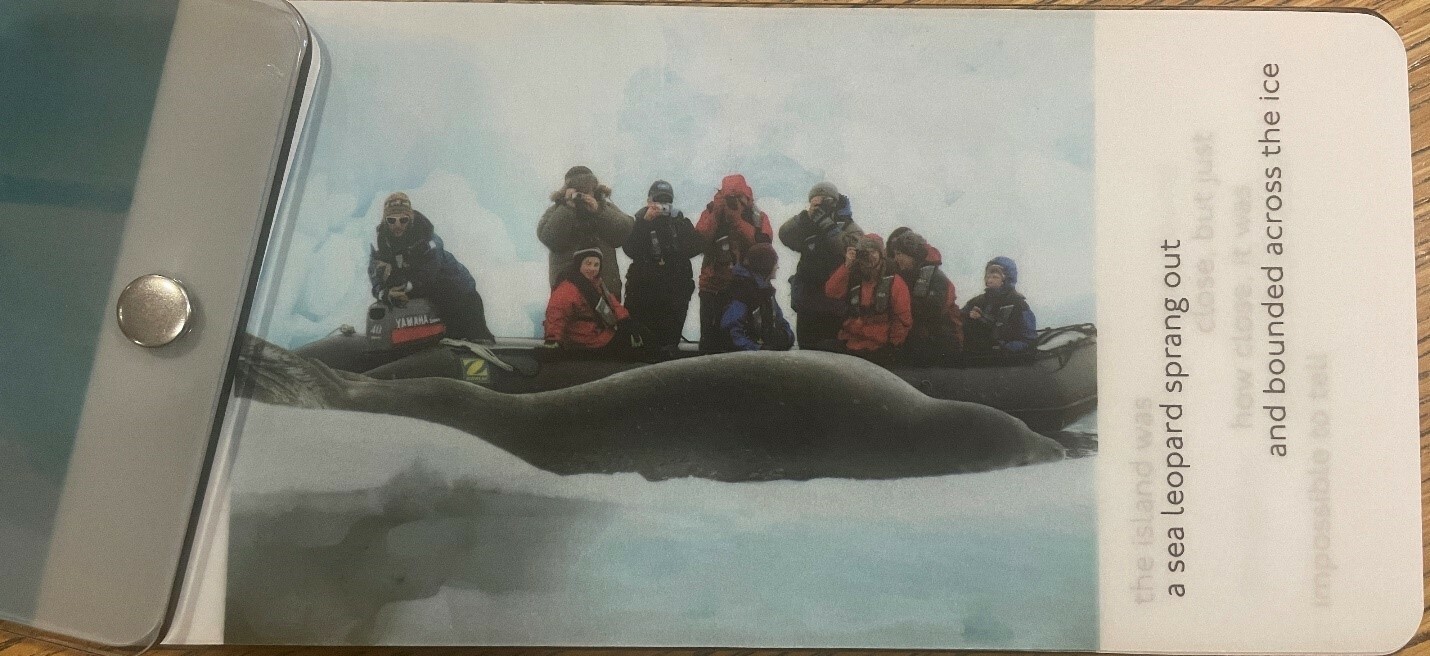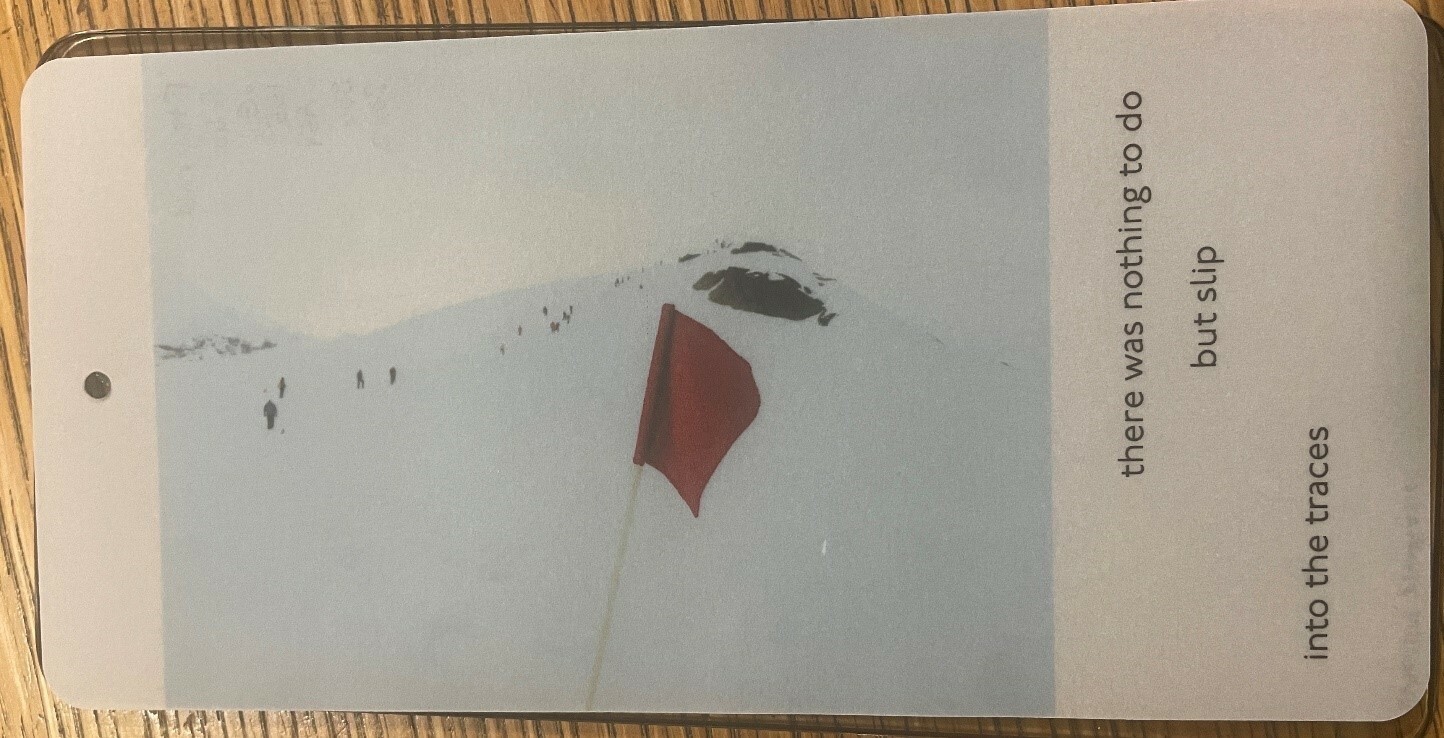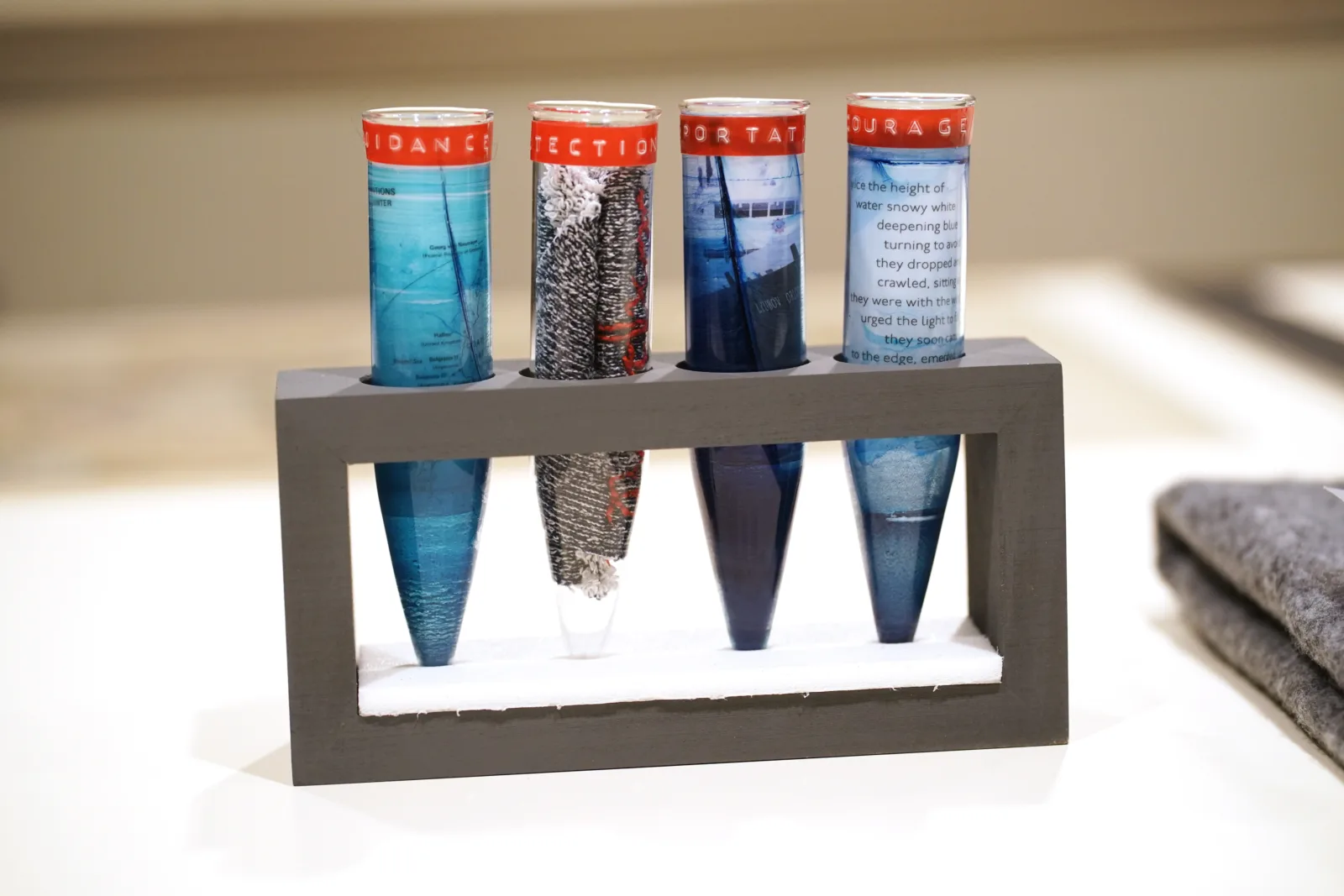A recent acquisition to the Newberry’s Gerald F. Fitzgerald Collection of Polar Books, Maps, and Art ruminates on the intersection of masculine heroism with eco-tourism and climate change. In her Antarctica: An Explorer’s Archive (2022), Rachel Simmons juxtaposes images of her own trip to Antarctica in 2008 with text from Alfred Lansing’s harrowing and celebratory recounting of Sir Ernest Shackleton’s doomed expedition of 1914. And, in a twist, Simmons’ narrative concludes with a lost ship just like that of Shackleton’s.
Simmons emphasizes themes of exploration, heroism, gender, storytelling, and memory, noting that “women were not invited to participate in early polar expeditions.” Simmons arrives in Antarctica as an eco-tourist, paying for the adventure that so many in the past took on as a source of income. She faces anxiety, seasickness, and homesickness, but within the comforts of a cruise ship. She juxtaposes her photographs with text from Lansing’s account. An image of tourists lined up photographing a seal is paired with the words “A sea leopard sprang out and bounded across the ice.”

The acquisition arrived as the Newberry hosted Mensun Bound, leader of the 2022 expedition that finally found the remains of Shackleton’s Endurance. At times, Simmons transforms the legend of heroic struggle into fleeting impermanence. She excerpts a passage about the men of the Endurance laboriously pulling their rescue boats across melting ice and recontextualizes it as a haunting caption for a photo of tourists in the distance of an icy landscape: “there was nothing to do but slip into the traces.” In Lansing’s account of the Endurance, these tracings were the frozen tracks of the sleds they desperately needed to move across unstable ice. In Simmons’ account, they are the traces of dead explorers, lost ships, and, not least, the retreating ice all around Antarctica due to climate change.

Simmons’ Archive ends with a short essay about the MV Lyubov Orlova, the Soviet-era ship that brought her to Antarctica. Like the Endurance once was, it too is now lost. The ship had been decommissioned and sold for scrap. But in being towed away, it broke free and drifted off. One ship has become a celebrated archaeology of frozen heroism, and another is now “finally free to explore the oceans on her own.”
You can view Simmons’ Antarctica: An Explorer’s Archive in the Newberry Library’s Reading Rooms.
